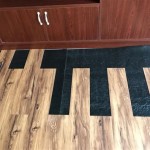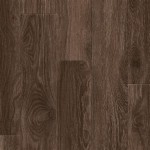How to Measure Kitchen Floor for Tiles
Whether you're a seasoned DIYer or a first-time homeowner, measuring your kitchen floor for tiles is a crucial step that sets the stage for a successful tiling project. Accurate measurements ensure that you purchase the correct amount of tiles and that they fit perfectly within the space. Here's a comprehensive guide to help you measure your kitchen floor like a pro:
Clear the Space
Begin by removing all furniture, appliances, and other obstacles from the kitchen floor. This will give you a clear and unobstructed work area. Sweep or vacuum the floor to eliminate any debris that could interfere with measurements.
Find the Length and Width
Using a measuring tape, measure the length and width of the kitchen floor. Start measuring from one corner and work your way to the opposite one. Record your measurements in feet and inches. If the floor is not rectangular, measure the length and width of each section separately and note down their dimensions.
Measure Doorways and Obstacles
Identify any doorways, appliances, or other obstacles innerhalb the kitchen floor. Measure the length and width of these obstacles and record their dimensions. These measurements will help you determine the amount of tile you need to cut and shape to fit around them.
Calculate the Area
To calculate the area of the kitchen floor, multiply the length by the width. If the floor is not rectangular, divide it into smaller rectangular sections and calculate the area of each section separately. Then, add the areas of all sections together to get the total area of the floor.
Determine the Tile Size
Before measuring for tiles, determine the size of the tiles you want to use. This will help you calculate the number of tiles needed. Measure the length and width of the tiles and record these dimensions.
Calculate the Number of Tiles
To calculate the number of tiles needed, divide the total area of the kitchen floor by the area of each tile. This will give you an approximate number of tiles required. Round up to the nearest whole number to ensure you have enough tiles to cover the entire floor.
Add 10% for Waste
Always add 10% to the calculated number of tiles to account for waste during cutting and installation. This will ensure that you have sufficient tiles to complete the project without running out.
Verify Your Measurements
Once you have completed your measurements, double-check them to ensure accuracy. Repeat the measurements from different points and compare the results. If you encounter any discrepancies, remeasure the area until you are confident in your findings.
By following these steps, you can confidently measure your kitchen floor for tiles, ensuring a successful and professional-looking tiling project. Remember to take your time, double-check your measurements, and add a bit extra for waste to guarantee that you have everything you need to complete the job.

How To Measure For Floor Tiles Devon
How To Calculate Tiles Needed For A Floor

How To Measure Tiles For Your Kitchen

How To Measure A Room For Flooring And Install Tiles Correctly Rubi Blog Usa

How To Measure Tiles For Your Kitchen

How Do I Measure My Area To Tile Whole Flooring Floor Covering Stone Porcelain Low

Lesson Tip How To Calculate Much Tile You Need Tiletoria

How To Measure For Tile Cuts An Easy Method

How To Measure For Flooring

How To Measure For Tiles Tile Super Help Advice
Related Posts








